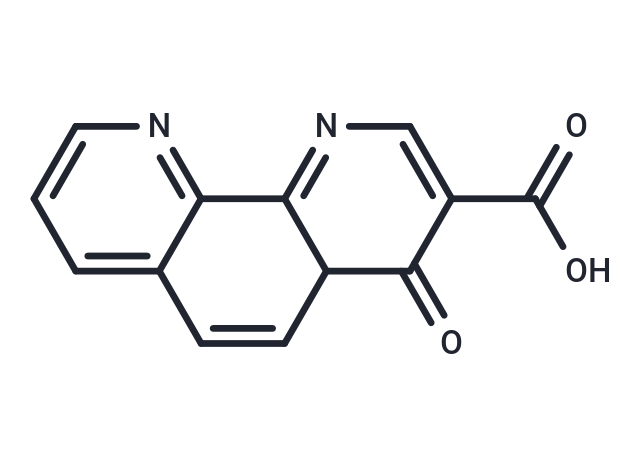Shopping Cart
- Remove All
 Your shopping cart is currently empty
Your shopping cart is currently empty

1,4-DPCA is an inhibitor of prolyl-hydroxylase with an IC50 of 2.4 µM for collagen hydroxylation in human foreskin fibroblasts and 60 μM for factor inhibiting HIF (FIH).

| Pack Size | Price | Availability | Quantity |
|---|---|---|---|
| 5 mg | $47 | In Stock | |
| 10 mg | $76 | In Stock | |
| 25 mg | $155 | In Stock | |
| 50 mg | $247 | In Stock | |
| 100 mg | $396 | In Stock | |
| 200 mg | $583 | In Stock | |
| 500 mg | $929 | In Stock | |
| 1 mL x 10 mM (in DMSO) | $52 | In Stock |
| Description | 1,4-DPCA is an inhibitor of prolyl-hydroxylase with an IC50 of 2.4 µM for collagen hydroxylation in human foreskin fibroblasts and 60 μM for factor inhibiting HIF (FIH). |
| In vitro | 1,4-DPCA significantly reduces the colony sizes and invasive branches of T4-2 (10 μM) and ZR-75-1 cells (20 μM). 1,4-DPCA inhibits the proliferation in T4-2, ZR-75-1, MDA-MB-231 cells, and MDA-MB-157[1]. In mouse B6 cells, 1,4-DPCA specifically increases the expression of proangiogenic target genes including Hmox1 and Vegfa, and proglycolytic targets including Ldh-a, Pdk1, Glut1, and Pgk1[2]. |
| In vivo | In mice, 1,4-DPCA effectively inhibits collagen deposition within and on the outer surface of the disc, and limits connective tissue ingrowth. 1,4-DPCA suppresses connective tissue ingrowth in porous porous poly (lactic-co-glycolic acid) discs implanted in the peritoneal cavity[3]. |
| Molecular Weight | 240.21 |
| Formula | C13H8N2O3 |
| Cas No. | 331830-20-7 |
| Smiles | OC(=O)C1=CN=C2C(C=Cc3cccnc23)C1=O |
| Relative Density. | 1.504g/cm3 |
| Storage | Powder: -20°C for 3 years | In solvent: -80°C for 1 year | Shipping with blue ice. | ||||||||||||||||||||
| Solubility Information | DMSO: 2.78 mg/mL (11.56 mM), Sonication is recommended. | ||||||||||||||||||||
Solution Preparation Table | |||||||||||||||||||||
DMSO
| |||||||||||||||||||||

Copyright © 2015-2025 TargetMol Chemicals Inc. All Rights Reserved.